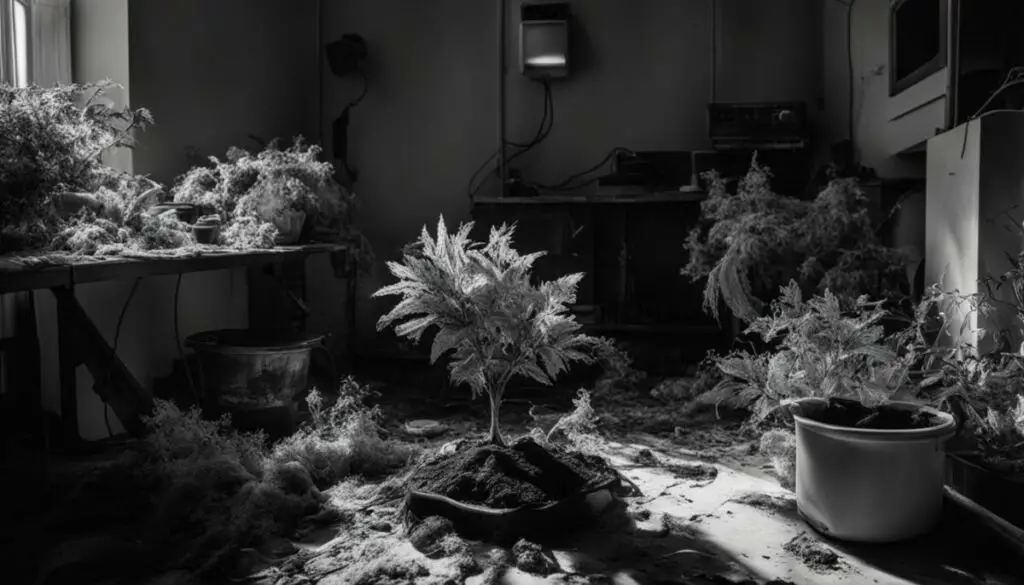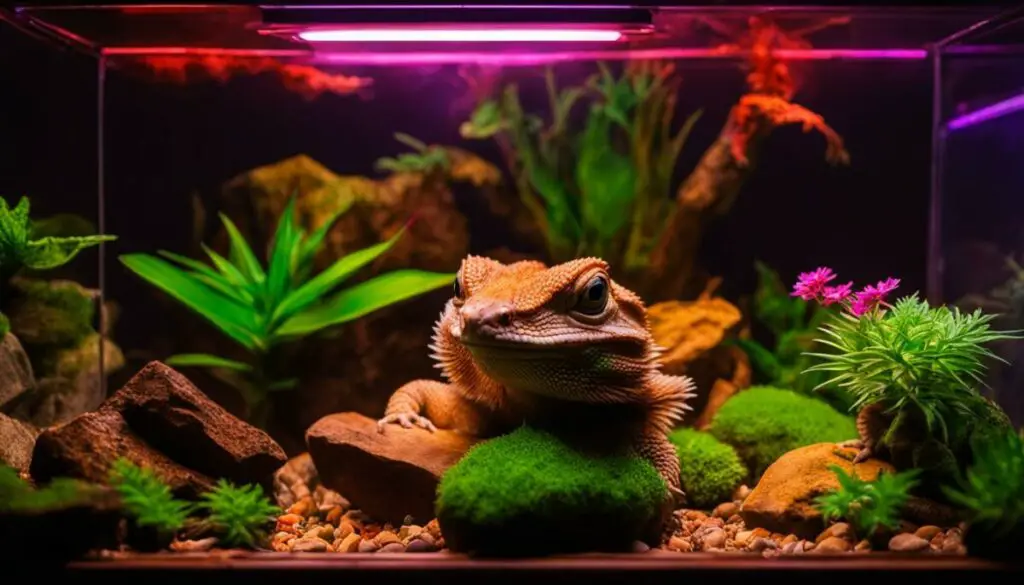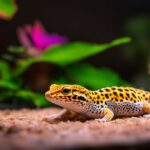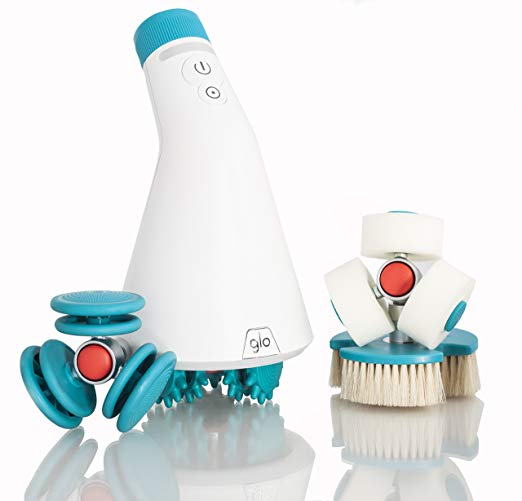Last Updated on 5 months by Francis
When it comes to providing the best care for your pet reptile, it’s natural to have questions about their lighting and heating needs. One common question that arises is whether it’s safe to leave an infrared basking light on 24/7. To help you make an informed decision, let’s explore the facts and considerations surrounding the continuous use of infrared light for your reptile.
Contents
Key Takeaways:
- Leaving an infrared basking light on 24/7 can disrupt your reptile’s natural day and night cycle.
- Reptiles require a period of darkness to rest and recharge their biological processes.
- Constant exposure to light may lead to sleep disturbances and overactive metabolism.
- Alternative heating options, like ceramic heat emitters and heat mats, can provide warmth without disrupting the natural light cycle.
- Consulting with a reptile specialist or veterinarian is recommended to ensure your reptile’s well-being.
The Importance of a Day and Night Cycle for Reptiles

Reptiles, like other animals, have evolved to follow a natural day and night cycle. This cycle is important for their overall health and well-being.
During the day, reptiles benefit from exposure to natural light, which provides them with essential UVB rays for vitamin D synthesis and helps regulate their internal clock.
At night, reptiles require a period of darkness to rest and recover. Keeping an infrared basking light on 24/7 disrupts this natural cycle and can have negative effects on their behavior, metabolism, and overall health.
It is crucial to provide a balanced lighting schedule that replicates their natural habitat, allowing them to receive the proper amount of light and darkness for their well-being.
| Benefits of a Day and Night Cycle for Reptiles | Negative Effects of Constant Light on Reptiles |
|---|---|
|
|
Reptiles rely on a natural day and night cycle for their overall well-being. Constant exposure to light can disrupt their sleep patterns and have negative effects on behavior, metabolism, and overall health.
Providing a suitable lighting schedule that mimics their natural habitat is essential for the proper care of pet reptiles. This can be achieved by using light sources that emit the necessary UVB rays during the day and providing a period of darkness at night.
By understanding the importance of a day and night cycle for reptiles, we can ensure that our pets thrive in a healthy and balanced environment.
Potential Risks of Leaving an Infrared Basking Light On 24/7

Leaving an infrared basking light on 24/7 can pose several risks to your pet reptile. One of the main concerns is the disruption of their sleep patterns. Like other animals, reptiles require regular periods of rest to maintain their health. Constant exposure to light can lead to sleep deprivation and stress, which can have a negative impact on their behavior and immune system.
Additionally, keeping the light on all the time may result in an overactive metabolism, which can lead to rapid growth and potential health issues. Reptiles have specific growth rates that should not be artificially accelerated, and the constant light can interfere with their natural growth and development.
It is important to provide a balanced light and dark cycle to ensure the well-being of your pet reptile. This can be achieved by turning off the infrared basking light during the night and providing alternative heat sources if necessary. Monitoring your reptile’s behavior and overall health is crucial to detect any signs of stress or discomfort. If you notice any negative effects or changes in your reptile’s behavior, it is recommended to consult with a veterinarian or reptile specialist for further guidance and adjustments to their lighting schedule.
Table: Risks of Leaving an Infrared Basking Light On 24/7
| Risk | Effects |
|---|---|
| Disrupted sleep patterns | Sleep deprivation, stress, behavioral changes |
| Overactive metabolism | Rapid growth, potential health issues |
Alternative Heating Options for Reptiles at Night

When it comes to providing heat for your reptile at night, there are alternative options to leaving an infrared basking light on constantly. These alternatives can help you maintain a natural day and night cycle for your pet while still ensuring they have the necessary warmth. Two popular choices for nocturnal heat sources are ceramic heat emitters and heat mats controlled by thermostats.
A ceramic heat emitter is a great option as it emits infrared heat without any light. This means that your reptile can maintain a comfortable temperature without being exposed to constant light, which can disrupt their sleep. Ceramic heat emitters are available in different wattages to suit the size of your reptile’s enclosure.
Another alternative is a heat mat controlled by a thermostat. These mats provide localized heat from the bottom of the enclosure, creating a warm basking spot for your reptile. By using a thermostat, you can regulate the temperature and ensure that it remains within the optimal range for your reptile’s species.
Benefits of Alternative Heating Options:
- Allows your reptile to maintain a natural day and night cycle
- Prevents sleep disturbances caused by constant light
- Provides suitable warmth without disrupting their sleep
- Regulates temperature with precision using thermostats
| Alternative Heating Option | Features | Benefits |
|---|---|---|
| Ceramic Heat Emitter | Emits infrared heat without light | Allows for a natural day and night cycle without disrupting sleep |
| Heat Mat with Thermostat | Provides localized heat from the bottom of the enclosure | Offers precise temperature control and a warm basking spot |
By utilizing these alternative heating options, you can provide a comfortable and natural environment for your reptile while ensuring their well-being. It is important to research the specific heating requirements of your reptile’s species and consult with a reptile specialist or veterinarian to determine the most suitable option for your pet.
Considerations for Using Infrared Heat Lamps at Night
While it is generally not recommended to leave an infrared heat lamp on 24/7, there may be certain situations where it is necessary. For reptiles that require specific temperature gradients, such as nocturnal species or those with specific heat requirements, using an infrared heat lamp at night may be appropriate. However, it is crucial to carefully monitor the temperature and ensure that it is within the optimal range for your reptile’s species. Using a thermostat to regulate the heat output of the lamp is highly recommended to prevent overheating and potential harm to your pet reptile.
It’s important to note that not all reptiles benefit from infrared light at night. Some reptiles, particularly those that are diurnal, do not require additional heat during the night and may be negatively affected by constant light exposure. It’s best to consult with a reptile specialist or veterinarian to determine if using an infrared heat lamp at night is suitable for your specific reptile species.
“Infrared heat lamps can be a valuable tool for providing nighttime warmth to reptiles with specific heat requirements. However, it’s crucial to strike a balance and ensure that the temperature remains within a safe range. Monitoring the temperature and behavior of your reptile is essential for their well-being.” – Dr. Samantha Carter, Reptile Specialist
When using an infrared heat lamp at night, it’s important to create a suitable environment that mimics your reptile’s natural habitat. This includes providing hiding spots and proper ventilation to prevent overheating. Regularly inspect the heat lamp and its components for any signs of wear or damage to ensure safe operation.
| Pros of Using Infrared Heat Lamps at Night | Cons of Using Infrared Heat Lamps at Night |
|---|---|
|
|
Expert Advice on Using Infrared Basking Lights

When it comes to using infrared basking lights for reptiles, it is important to follow expert advice and implement safe practices for optimal reptile heating. Reptile specialists and experienced reptile keepers generally advise against leaving an infrared basking light on 24/7. Instead, they recommend providing a natural day and night cycle for your pet reptile, which includes a period of darkness for rest and normal biological processes.
Consulting with a veterinarian or reptile specialist is crucial to determine the specific heating requirements for your reptile species. They can provide guidance on the suitable heat sources that mimic their natural habitat and ensure their overall well-being. It is important to understand that each reptile species has different lighting and heating needs, so finding the right balance is essential.
Monitoring the temperature and behavior of your reptile is also crucial to ensure they are comfortable and thriving. Regularly check the temperature of the enclosure and make adjustments as needed. Using a thermostat to regulate the temperature is highly recommended to prevent overheating and potential harm to your pet reptile.
“Providing a natural day and night cycle, along with suitable heat sources, is key to maintaining a healthy and happy reptile,” says Dr. Sarah Johnson, a reptile veterinarian. “Consulting with an expert and closely monitoring your reptile’s behavior and health will help ensure their well-being.”
By following expert advice and implementing safe practices, you can provide the best possible environment for your pet reptile, promoting their natural behaviors and overall health.
| Expert Tips for Using Infrared Basking Lights |
|---|
| Consult with a veterinarian or reptile specialist for specific heating requirements for your reptile species. |
| Provide a natural day and night cycle, including a period of darkness for rest and normal biological processes. |
| Monitor the temperature of the enclosure and use a thermostat to regulate the heat output. |
| Regularly observe your reptile’s behavior and health to ensure they are comfortable and thriving. |
Finding the Right Balance for Your Reptile’s Lighting Schedule

When it comes to providing the perfect lighting schedule for your pet reptile, finding the right balance between light and dark is crucial for their well-being. Each reptile species has different lighting and heating requirements, so it’s important to create a schedule that mimics their natural habitat. By understanding their needs and following a few guidelines, you can ensure that your reptile is comfortable and thriving in their enclosure.
One of the key factors to consider is providing a natural day and night cycle. This means allowing for a period of darkness during the night. Reptiles, like other animals, require this downtime for rest and normal biological processes. Turning off the infrared basking light during the night is essential to maintain their natural rhythm. However, if your reptile requires additional heat during the night, alternative heating options, such as a ceramic heat emitter or a heat mat controlled by a thermostat, can be used to provide warmth without disrupting the natural light cycle.
Monitoring the temperature and behavior of your reptile is also important in finding the right balance. Keep a close eye on the enclosure’s temperature to ensure it remains within the optimal range for your reptile’s species. Regularly observe their behavior and overall health to ensure they are comfortable and not showing any signs of stress or discomfort. If you have any concerns or questions about your reptile’s lighting schedule, consulting with a reptile specialist or veterinarian can provide valuable guidance tailored to your specific reptile’s needs.
By finding the perfect balance between light and dark, you can create a lighting schedule that supports your reptile’s natural day and night cycle, ensuring their health and well-being. Remember to provide a period of darkness for rest, use alternative heating options if necessary, and regularly monitor their behavior and temperature. With the right lighting schedule, your reptile will thrive in their enclosure, enjoying a comfortable and balanced environment.
Table: Recommended Lighting Schedule for Common Reptile Species
| Reptile Species | Daylight Hours | Nighttime Hours (Period of Darkness) |
|---|---|---|
| Bearded Dragon | 12-14 hours | 10-12 hours |
| Leopard Gecko | 10-12 hours | 12-14 hours |
| Corn Snake | 10-12 hours | 12-14 hours |
| Red-Eared Slider Turtle | 10-12 hours | 12-14 hours |
“Creating a proper lighting schedule for your reptile is essential for their overall well-being. By providing a balanced cycle of light and darkness, you can mimic their natural habitat and support their biological processes.” – Reptile Specialist
Common Myths and Misconceptions About Reptile Lighting
There are several myths and misconceptions surrounding reptile lighting, particularly when it comes to leaving an infrared basking light on 24/7. Let’s take a closer look at some of these misconceptions:
Myth 1: Constant light promotes faster growth in reptiles
Contrary to popular belief, constant light does not accelerate the growth of reptiles. Reptiles have a natural growth rate that should not be artificially manipulated. In fact, providing a balanced lighting schedule that includes a period of darkness is crucial for their overall health and well-being.
Most reptiles are adapted to low-light conditions and can navigate their surroundings without the need for constant light. They have specialized sensory organs that allow them to detect movement and identify objects in dim lighting. Providing a suitable nocturnal heat source, such as a ceramic heat emitter or a heat mat, is more important than constant light for their nighttime needs.
“Contrary to popular belief, constant light does not accelerate the growth of reptiles.”
Myth 3: Infrared basking lights are the only option for heating reptiles at night
While infrared basking lights are commonly used for providing heat during the day, there are alternative options for nighttime heating. Ceramic heat emitters and heat mats controlled by thermostats are effective alternatives that provide warmth without disturbing the natural day and night cycle of reptiles. These options allow reptiles to regulate their sleeping patterns and maintain a healthy metabolism.
It’s important to separate fact from fiction when it comes to reptile lighting. By understanding the true needs of your pet reptile and providing appropriate lighting and heating sources, you can ensure their well-being and create a suitable environment that mimics their natural habitat.
Conclusion
After considering the facts and expert advice, it is clear that leaving an infrared basking light on 24/7 is not recommended for the well-being of reptiles. It is crucial to provide them with a natural day and night cycle, allowing them to regulate their biological processes and get proper rest. Disrupting this cycle can lead to sleep disturbances and potential health issues. Therefore, it is important to follow safe practices for reptile lighting.
Instead of keeping the light on constantly, it is advisable to provide a balanced lighting schedule that includes a period of darkness. This can be achieved by turning off the infrared basking light during the night. If your reptile requires heat at night, alternative options like ceramic heat emitters or heat mats controlled by thermostats can be used to provide the necessary warmth without disturbing their natural light cycle.
To ensure the well-being of your pet reptile, it is always recommended to consult with a reptile specialist or veterinarian. They can provide expert guidance on the specific heating requirements for your reptile species and help you find the right balance for their lighting schedule. By following these safe practices, you can ensure a healthy and thriving environment for your beloved reptile companion.
FAQ
Can I leave an infrared basking light on 24/7?
It is generally not recommended to leave an infrared basking light on 24/7 for reptiles. This can disrupt their natural day and night cycle and may lead to sleep disturbances and health issues.
Why is a day and night cycle important for reptiles?
Reptiles, like other animals, have evolved to follow a natural day and night cycle. This cycle is crucial for their overall health and well-being, as it regulates their behavior, metabolism, and internal clock.
What are the potential risks of leaving an infrared basking light on 24/7?
Constant exposure to light can disrupt reptiles’ sleep patterns, leading to sleep deprivation and stress. It may also result in an overactive metabolism, which can cause rapid growth and potential health issues.
What are alternative heating options for reptiles at night?
Some alternative options for providing heat at night include ceramic heat emitters, which emit infrared heat without light, and heat mats controlled by thermostats, which provide localized heat from the bottom of the enclosure.
Are there considerations for using infrared heat lamps at night?
If using an infrared heat lamp at night, it is crucial to monitor the temperature and ensure it remains within the optimal range for your reptile’s species. Using a thermostat to regulate the heat output is highly recommended to prevent overheating and potential harm to your pet.
What is expert advice on using infrared basking lights?
Reptile experts and experienced keepers generally advise against leaving an infrared basking light on 24/7. They recommend providing a natural day and night cycle for your reptile and consulting with a veterinarian or specialist to determine the specific heating requirements for your reptile’s species.
How can I find the right balance for my reptile’s lighting schedule?
Each reptile species has different lighting and heating requirements. It is recommended to provide a natural day and night cycle, with a period of darkness at night. Consulting with a reptile specialist or veterinarian can help determine the optimal lighting schedule for your pet.
What are common myths and misconceptions about reptile lighting?
Some common myths include the belief that constant light promotes faster growth in reptiles, which is not true as they have a natural growth rate. Another myth is that reptiles need constant light to see and navigate their enclosure at night, when in fact most reptiles are adapted to low-light conditions.
Is there a conclusion on leaving an infrared light on 24/7?
In conclusion, it is generally not recommended to leave an infrared basking light on 24/7 for reptiles. Providing a balanced lighting schedule with a period of darkness is essential for their well-being. Consulting with experts and monitoring your reptile’s behavior and health are crucial for their comfort and thriving.









